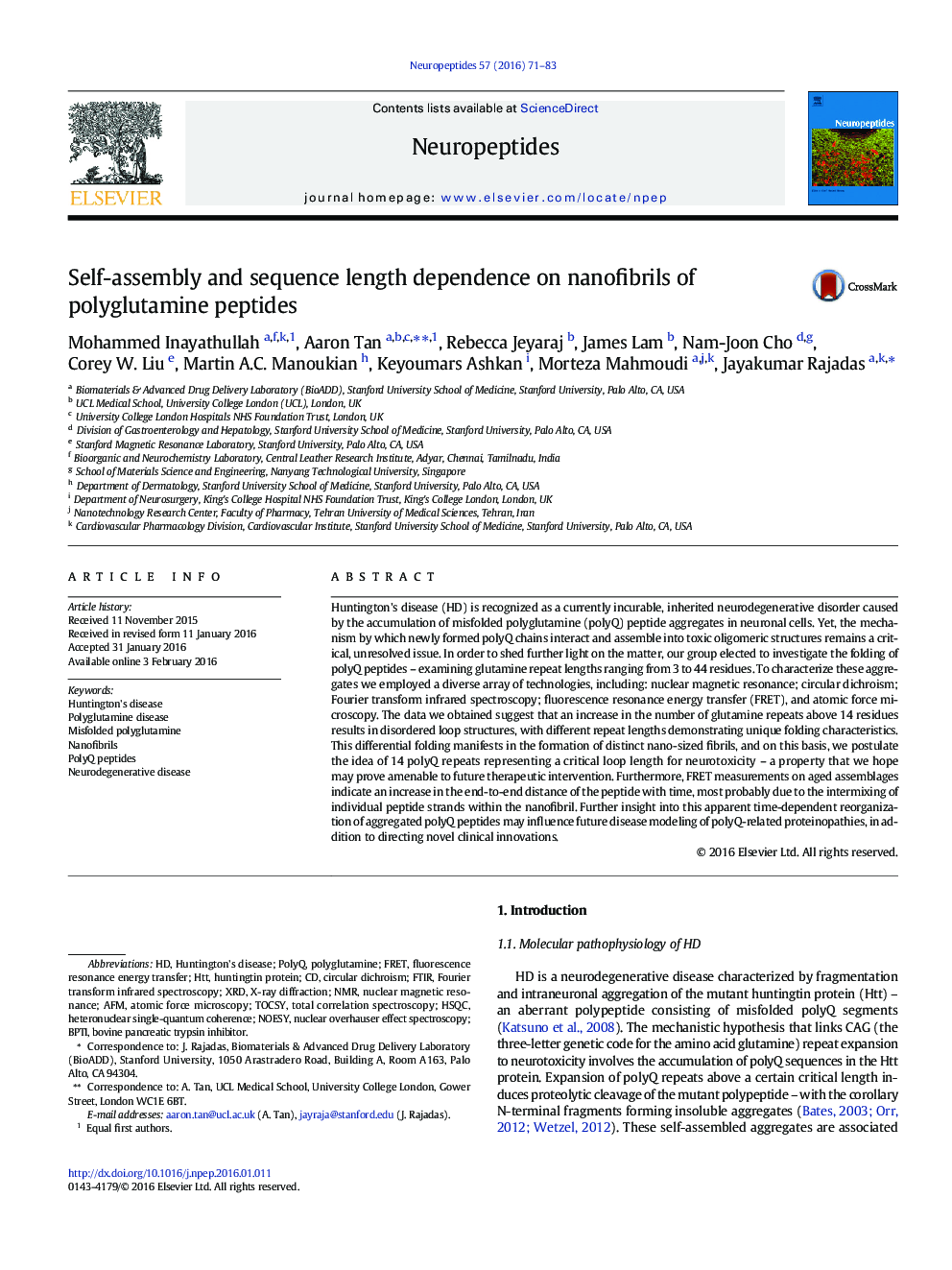| Article ID | Journal | Published Year | Pages | File Type |
|---|---|---|---|---|
| 5904089 | Neuropeptides | 2016 | 13 Pages |
â¢Data from spectroscopic techniques, fluorescence resonance energy transfer (FRET) and atomic force microscopy (AFM) suggests that polyQ peptides with different repeat lengths demonstrate unique folding characteristics, leading to the formation of distinct nanosized fibrils.â¢An increase in the number of glutamine repeats above 14 residues results in disordered loop structures that transition to β-sheet structures with time. We thus postulate the idea of a critical loop length for neurotoxicity.â¢AFM reveals polyQ nanofibril growth in the x, y and z directions, suggesting a nucleation-dependent fibrillation pattern.â¢The end-to-end distance of peptides in polyQ assemblages increases on aging, according to FRET measurements. We attribute this to the reorganization and intermixing of individual peptide strands within the nanofibril over time.
Huntington's disease (HD) is recognized as a currently incurable, inherited neurodegenerative disorder caused by the accumulation of misfolded polyglutamine (polyQ) peptide aggregates in neuronal cells. Yet, the mechanism by which newly formed polyQ chains interact and assemble into toxic oligomeric structures remains a critical, unresolved issue. In order to shed further light on the matter, our group elected to investigate the folding of polyQ peptides - examining glutamine repeat lengths ranging from 3 to 44 residues. To characterize these aggregates we employed a diverse array of technologies, including: nuclear magnetic resonance; circular dichroism; Fourier transform infrared spectroscopy; fluorescence resonance energy transfer (FRET), and atomic force microscopy. The data we obtained suggest that an increase in the number of glutamine repeats above 14 residues results in disordered loop structures, with different repeat lengths demonstrating unique folding characteristics. This differential folding manifests in the formation of distinct nano-sized fibrils, and on this basis, we postulate the idea of 14 polyQ repeats representing a critical loop length for neurotoxicity - a property that we hope may prove amenable to future therapeutic intervention. Furthermore, FRET measurements on aged assemblages indicate an increase in the end-to-end distance of the peptide with time, most probably due to the intermixing of individual peptide strands within the nanofibril. Further insight into this apparent time-dependent reorganization of aggregated polyQ peptides may influence future disease modeling of polyQ-related proteinopathies, in addition to directing novel clinical innovations.
Graphical abstractDownload high-res image (171KB)Download full-size image
